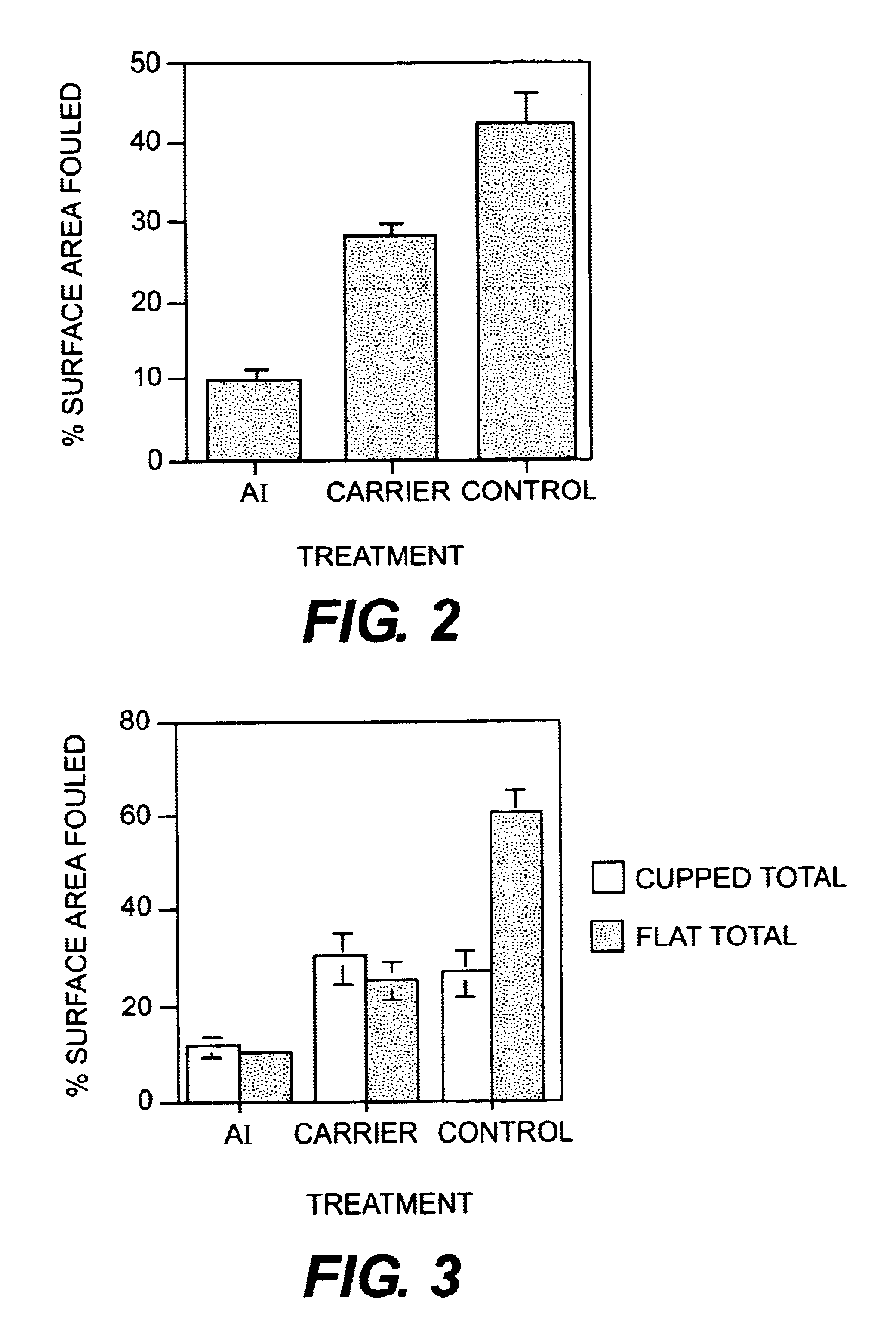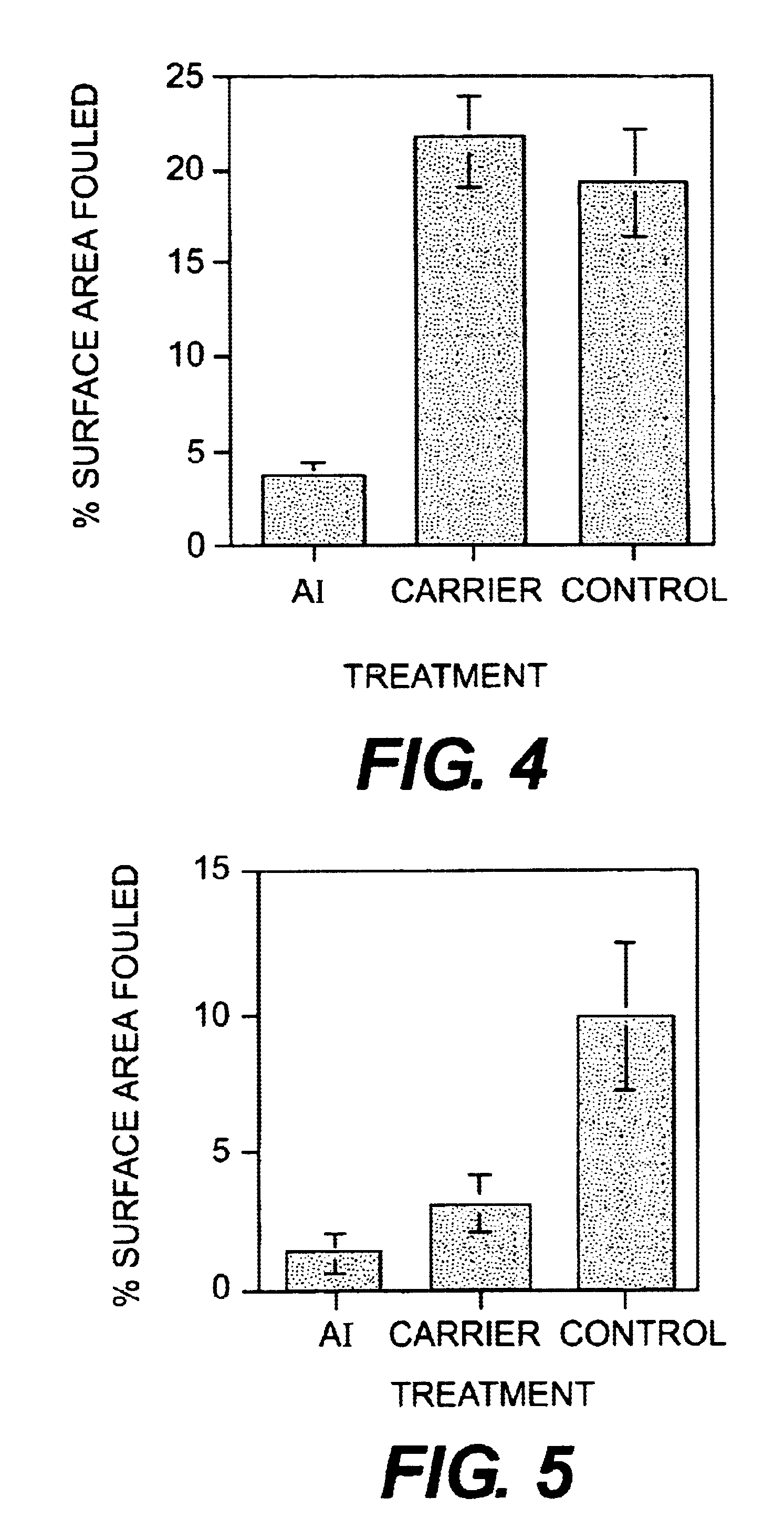Antifouling of shellfish and aquaculture apparatus
a technology of aquaculture apparatus and shellfish, which is applied in the direction of antifouling/underwater paint, chemical vapor deposition coating, medical preparations, etc., can solve the problems of reducing the growth, survival, and marketability of shellfish. , to achieve the effect of reducing or preventing the fouling of shellfish, and being non-toxi
- Summary
- Abstract
- Description
- Claims
- Application Information
AI Technical Summary
Benefits of technology
Problems solved by technology
Method used
Image
Examples
Embodiment Construction
Jervis Bay Tests
Methods
Test coatings consisted of shellac, as used ill furniture waxes and polishes, incorporating all active antifouling ingredient. In the examples described below the active ingredient is Sea-Nine 211.TM., an isothiazolone antifouling compound sold by Rohni & Haas. However, a variety of active ingredients could be incorporated into the shellac, including other isothiazolone type compounds, natural antifouling metabolites such as halogenated furanones, or other biocides. The isothiazolones and furanones covered in this specification are shown in FIG. 1. There are many variations on shellac, all of which, however, are derived from the bodily secretions of the "lac" beetle. In the present formulations, the dried beetle secretions are dissolved on ethanol (25:75 on a weight:volume basis), the active ingredient incorporated (@15% w:v), and the resulting solution applied to the surface of the animals either by painting (as described below), spraying, or dipping.
Shellfis...
PUM
| Property | Measurement | Unit |
|---|---|---|
| size | aaaaa | aaaaa |
| depth | aaaaa | aaaaa |
| depth | aaaaa | aaaaa |
Abstract
Description
Claims
Application Information
 Login to View More
Login to View More - R&D
- Intellectual Property
- Life Sciences
- Materials
- Tech Scout
- Unparalleled Data Quality
- Higher Quality Content
- 60% Fewer Hallucinations
Browse by: Latest US Patents, China's latest patents, Technical Efficacy Thesaurus, Application Domain, Technology Topic, Popular Technical Reports.
© 2025 PatSnap. All rights reserved.Legal|Privacy policy|Modern Slavery Act Transparency Statement|Sitemap|About US| Contact US: help@patsnap.com



